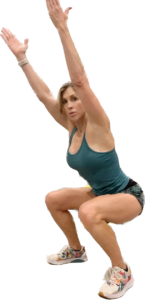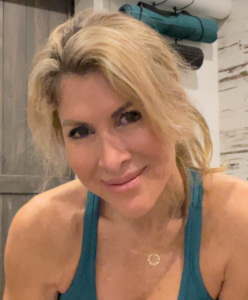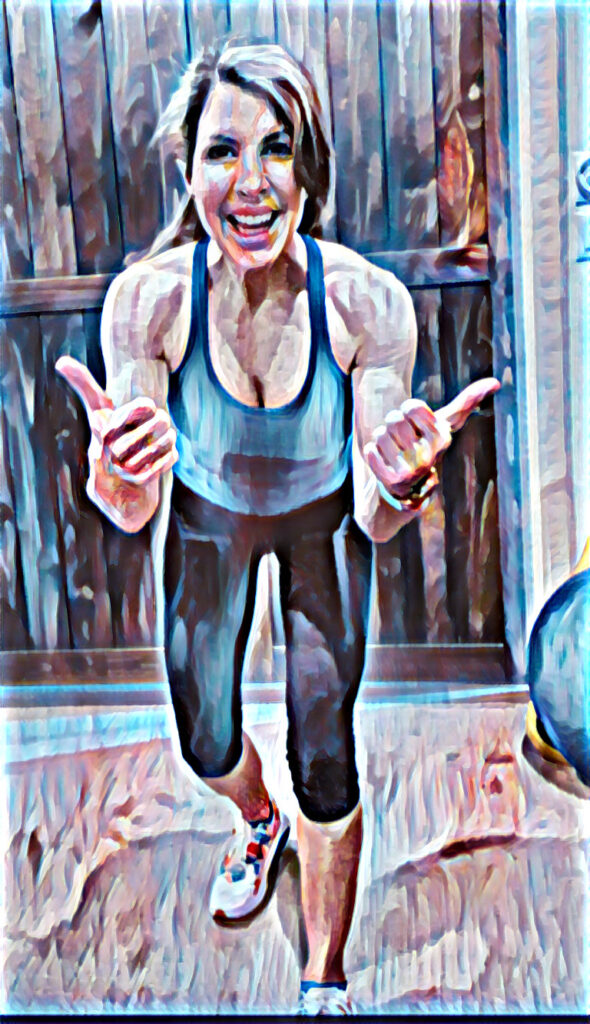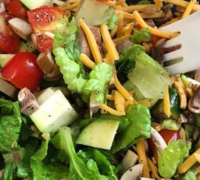You know I love Tabata workouts…and for SO many reasons beyond their efficiency.
Here’s why. Tabata is a type of high-intensity interval training (HIIT) that is known for its efficiency and effectiveness. This type of workout consists of 20 seconds of intense exercise followed by 10 seconds of rest, repeated for a total of 8 rounds. This may not seem like a lot of time (just 4 minutes!), but it is enough to get your heart rate up and burn calories. I fell in love with Tabata workouts when I was in the corporate grind and working a lot of hours. These workouts provided a great boost during the day while allowing me to stay in shape. Do several of these workouts throughout the day and VIOLA!
Another reason I love Tabata workouts is that they are great for people of all fitness levels. Because you work at a speed that is challenging for you, Tabata is accessible to everyone. In fact, it is often recommended for people who are new to exercise because it is a safe and effective way to get started.
Tabata workouts are also perfect for people with busy schedules. (This is how I came to love Tabatas.) A single Tabata workout only takes 4 minutes, so you can fit it in even on the busiest days. And if you have more time, you can string together multiple Tabata workouts for a longer session.
In addition to being efficient and effective, Tabata workouts are also a great way to get a full-body workout. The 20-second bursts of intense exercise work your heart, lungs, and muscles all at the same time. This makes Tabata a great choice for people who are looking to improve their cardiovascular health, build muscle, and lose weight.
Another reason I love Tabata workouts is that you can easily create a workout depending on fitness goals. I personally use the 2nd option below quite frequently. Here are two common ways to structure your Tabata workouts:
- A/B: Choose two exercises to alternate between. You’ll do each exercise for 20 seconds of intense effort followed by 10 seconds of rest, for a total of 8 rounds. This is a great way to get a full-body workout, as you’ll be working different muscle groups with each exercise.
- A/B/C/D: Choose four exercises to move through. You’ll do each exercise for 20 seconds of intense effort followed by 10 seconds of rest, for a total of 4 rounds. This is a great way to challenge yourself and your cardiovascular system, as you’ll be working different muscle groups in quick succession.
You can also choose any exercises you like for your Tabata workouts, such as:
- Cardio exercises: Jumping jacks, burpees, mountain climbers, sprinting, rowing, jumping rope
- Plyometric exercises: Squat jumps, tuck jumps, lunges, box jumps, push-ups, sit-ups
- Strength exercises: Dumbbell rows, push-ups, squats, lunges, pull-ups, bicep curls
No matter which exercises you choose, make sure to listen to your body and take breaks when needed. Tabata workouts can be intense, so it’s important to pace yourself and avoid overdoing it.
Here are some ideas for Tabata exercises you could include in your next workout:
- Push-ups
- Triceps dips
- Mountain climbers
- Tuck jumps
- Burpees
- High knees
- Bodyweight squats
- Bodyweight lunges
- Lunge jumps
- Jump squats
- Jumping jacks
- Jump rope
- Speed skaters
- Box jumps
If you’d like to make your Tabata workout more strength-based, you can incorporate weights. Some of those exercise ideas include:
- Clean and press
- Dumbbell snatch
- Front squat
- Alternating reverse lunge
- Push-up to mountain climber
- Biceps curl
When doing Tabata workouts, it is important to listen to your body and take breaks when needed. If you are feeling lightheaded or dizzy, stop the workout and rest. You can also modify the exercises to make them easier if needed.
Tabata workouts are a great way to get a quick and effective workout that is perfect for people of all fitness levels. If you are looking for a way to improve your fitness, lose weight, or build muscle, Tabata is a great option.
Before you go, the trainer in me wants to share some additional tips to get the most out of your Tabata workouts:
- Warm up before each workout with 5-10 minutes of light cardio, movements and dynamic stretches.
- Choose exercises that you can do safely and effectively at a high intensity.
- Focus on form over speed. It is better to do the exercises correctly at a slower pace than to rush through them and injure yourself.
- Listen to your body and take breaks when needed.
- Start with 2-3 Tabata workouts per week and gradually increase the number of workouts as you get fitter.
- Be consistent with your workouts. The more you do, the better the results you will see.
With a little planning and effort, you can easily incorporate Tabata workouts into your fitness routine and start seeing results quickly.
Try it….as one of my mentors used to ask, “What have you got to GAIN?”
the answer: A lot.
P.S. Follow me on Instagram @Hlthchic for FREE Tabata workouts weekly.










